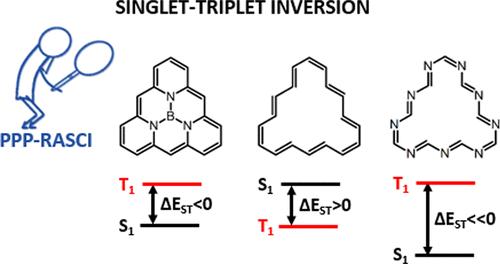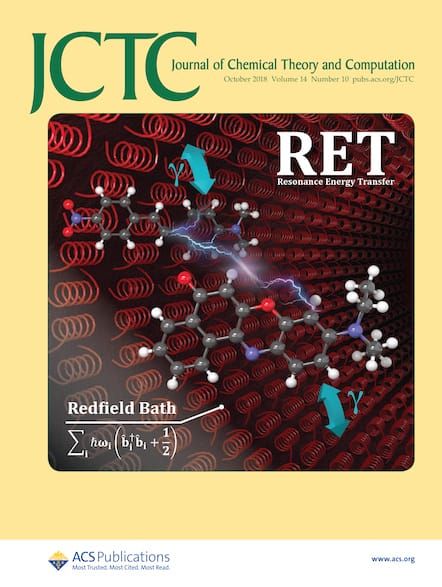三角形碳氮化硼中的单三反转
IF 5.7
1区 化学
Q2 CHEMISTRY, PHYSICAL
引用次数: 0
摘要
在一些π共轭三角形硼碳氮化物中发现单三重子(ST)反转现象是一项非凡的突破,它打破了亨德第一定律。ST 反转深深植根于强电子-电子相互作用,因其有望彻底改变有机发光二极管中的三重子收集而备受关注。利用π-共轭体系中相关电子的成熟 Pariser-Parr-Pople 模型,我们结合 CISDT 和受限活性空间构型相互作用计算,研究了几种三角硼碳氮化物的光物理学。我们的研究结果表明,这些体系中的 ST 反转主要是由分子边缘的交替电子供体和电子受体基团网络驱动的,而不是由三角形分子结构本身驱动的。本文章由计算机程序翻译,如有差异,请以英文原文为准。

Singlet–Triplet Inversion in Triangular Boron Carbon Nitrides
The discovery of singlet–triplet (ST) inversion in some π-conjugated triangle-shaped boron carbon nitrides is a remarkable breakthrough that defies Hund’s first rule. Deeply rooted in strong electron–electron interactions, ST inversion has garnered significant interest due to its potential to revolutionize triplet harvesting in organic LEDs. Using the well-established Pariser–Parr–Pople model for correlated electrons in π-conjugated systems, we employ a combination of CISDT and restricted active space configuration interaction calculations to investigate the photophysics of several triangular boron carbon nitrides. Our findings reveal that ST inversion in these systems is primarily driven by a network of alternating electron-donor and electron-acceptor groups in the molecular rim, rather than by the triangular molecular structure itself.
求助全文
通过发布文献求助,成功后即可免费获取论文全文。
去求助
来源期刊

Journal of Chemical Theory and Computation
化学-物理:原子、分子和化学物理
CiteScore
9.90
自引率
16.40%
发文量
568
审稿时长
1 months
期刊介绍:
The Journal of Chemical Theory and Computation invites new and original contributions with the understanding that, if accepted, they will not be published elsewhere. Papers reporting new theories, methodology, and/or important applications in quantum electronic structure, molecular dynamics, and statistical mechanics are appropriate for submission to this Journal. Specific topics include advances in or applications of ab initio quantum mechanics, density functional theory, design and properties of new materials, surface science, Monte Carlo simulations, solvation models, QM/MM calculations, biomolecular structure prediction, and molecular dynamics in the broadest sense including gas-phase dynamics, ab initio dynamics, biomolecular dynamics, and protein folding. The Journal does not consider papers that are straightforward applications of known methods including DFT and molecular dynamics. The Journal favors submissions that include advances in theory or methodology with applications to compelling problems.
 求助内容:
求助内容: 应助结果提醒方式:
应助结果提醒方式:


